
Table of Contents
As Jewelry Shopping Guide editors, we write about things that we love and we think you’ll like too. We often have affiliate partnerships, and may generate some revenue from these links at no cost to you.
Marquise and pear cut diamonds are very similar in appearance that choosing between the two can prove difficult. Both diamond cuts are stylish and elegant, with a classic look to them. They’re versatile options that suit a range of ring settings and their relative affordability compared to more popular types of cuts, make them an excellent choice if you’re looking for a more uncommon ring design at a reasonable price.
With all this said, how do you choose between a marquise and a pear cut diamond? Let’s take a look.
Pear Cut Diamond Rings
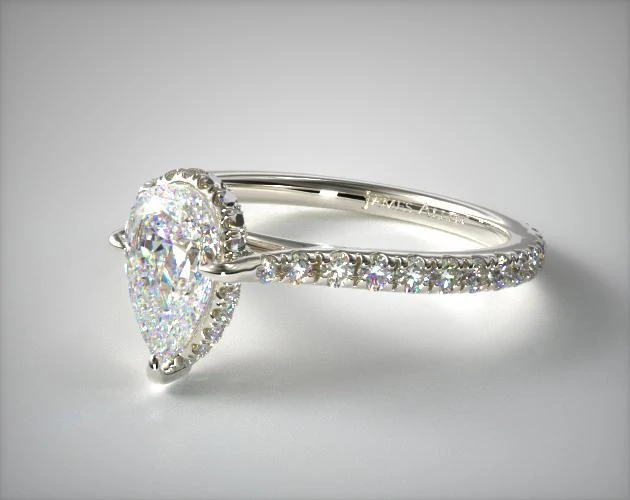
Pear cut diamonds can be thought of as a hybrid of marquise and round diamonds – with one pointed end and one curved end. Pear diamonds are named for their ‘pear’ shape but are sometimes also called ‘teardrop’ diamonds.
This is one of the oldest diamond cuts, dating back around 500 years. It has 58 facets (the same as round diamonds) and is a highly brilliant cut. While often used as the center stone, pear cut diamonds are beautiful as accent stones as well.
Cutting a pear diamond requires excellent craftsmanship because this shape is all about alignment and proportion. Symmetry is a crucial aspect of pear cuts as even the slightest misalignment can is noticeable. The point of the pear should align perfectly with the tip of the curve, with no straight edges on the sides of the cut.
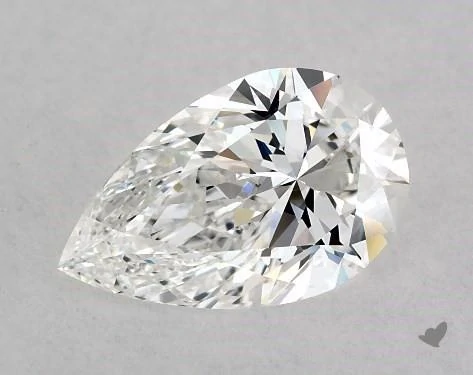
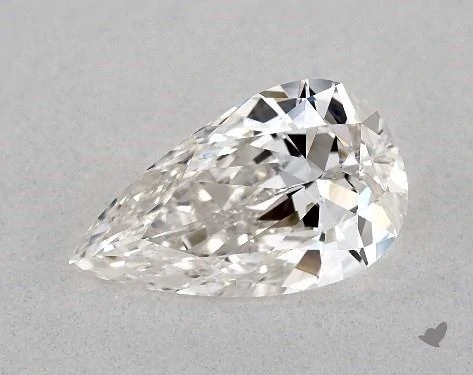
The pear cut on the left is of low quality with misaligned facets and straight edges, whereas the pear cut on the right shows beautiful curves and graceful sparkle. Always inspect each pear cut diamond carefully via 360-degree video and HD images before you decide which one to purchase.
The length to width ratio is ideally between 1.50 to 1.75 for the most elegant pear shape, but this depends on your preferences. Also, as pear diamonds are prone to displaying bowties avoid these and check for a stone that’s aesthetically pleasing with no darkened shadows lying horizontally across its surface.
Another thing to note is that pear diamonds tend to show even the slightest color. Unless you want the stone to display a warm tint, stick with a color grade of H or better.
While pear cuts were considered old-fashioned, they’ve recently come back into style and are highly sought after. They give an old-world charm to modern ring designs, ideal for those with a love for vintage designs.
Marquise Cut Diamond Rings
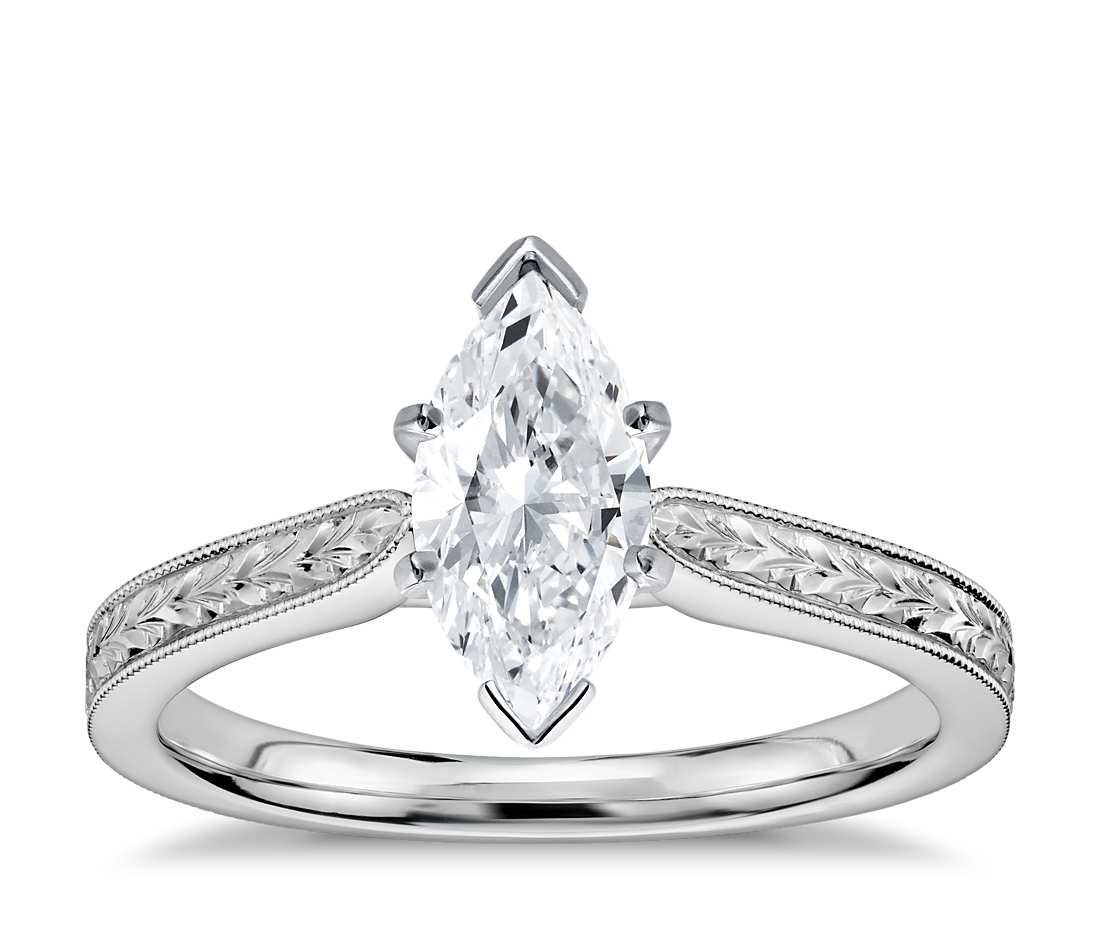
The marquise cut has been around since the 18th century, when it was created in homage of the lips of Madame de Pompadour, the mistress of King Louis XV of France. The cut features 56 facets and has an elliptical shape with two pointed ends. The ideal ration for marquise cuts is 1.75 to 2.25, but like the pear cut, this depends on your personal choice.
Marquise diamonds are very brilliant. The cut tends to enhance the size of the diamond, making it appear larger than it is. This makes marquise cuts an excellent option for balancing value with size and beauty.
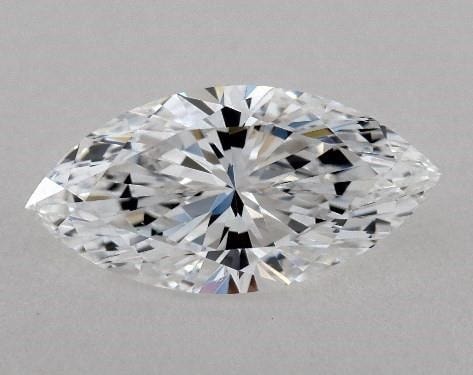
However, like the pear cut, marquise cuts can also feature the dreaded bowtie, which can mar the beauty of the cut. Perfect alignment and proportion are also critical, as any defects in symmetry is easy to spot and gives an unbalanced look to the ring.
Marquise cut engagement rings make the wearer’s hands appear slimmer and give a sophisticated, vintage look to the design. This cut has also come back into the limelight in recent years making it a great option for a non-traditional engagement ring.
Pear vs. Marquise Diamond Shape Shopping Tips
When shopping for either a marquise or a pear cut diamond, the advice is generally the same as these cuts tend to be quite similar.
- Both the marquise and pear diamond cuts tend to make your fingers appear slimmer and longer when the stone is set vertically in an engagement ring setting. This is ideal for people with chunky or short fingers, as these cuts add a natural grace and beauty to your hands.
- For long or wide fingers, setting the pear and marquise cut to horizontally gives more coverage to the fingers and provides balance to the look.
- Both cuts look excellent in a variety of settings, with or without accent stones.
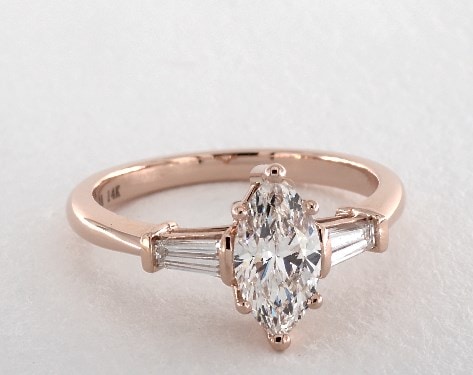
- The marquise cut’s double points mean that it is more vulnerable than a pear cut and requires strategically placed prongs or a bezel setting on either end to protect the points. The pear cut only has one vulnerable point. Ensure that the ring setting provides sufficient security for the cuts’ points.
- For both these cuts, symmetry and exacting proportion is crucial to get the best look. Bad cuts can manifest in bowties and straight edges. Ensure you see imagery of the actual diamond you’re planning to buy and not just stock images. The GIA doesn’t provide a Cut grade for either of these cuts so it’s up to you to check if they cut is acceptable.
- Avoid cuts that are too narrow for both pear and marquise, as these can have reduced brilliance and poor light performance.
- Both marquise and pear cut diamonds are much lower in price compared to round and princess cut diamonds, with a 1.0 carat marquise or pear diamond typically ranging around $5000 to $6500. However, between the two, marquise cuts tend to be more expensive. Compare this 1.02 carat H color marquise cut diamond to this similar 1.01 carat H color pear cut diamond. The difference in price is significant.
Pear vs. Marquise – Which Should I Choose?
Choosing between the marquise and the pear cuts can be difficult because both cuts have pros and cons and are very similar in their characteristics.
Both cuts are graceful with a vintage touch, elongate the fingers and make them appear slimmer. Both cuts are relatively less expensive diamond cuts and suit a range of ring settings. So, which to choose?
Indira: I love my marquise diamond because of its pointy elegant shape, but I have hurt people with it a few times when shaking hands! I think it looks very feminine.
Sara: I’ve always found marquise diamonds kind of meh, but pears are very stylish and ooze with sophistication. It also gives you more ways to wear it – with the pear pointing up or down – and looks like a dream with a curved band.
Ultimately, there’s no right or wrong answer here. Go by your preferences and personal tastes. While the pear cut tends to be more popular than the marquise, there’s no denying that both have a lot going for them.









